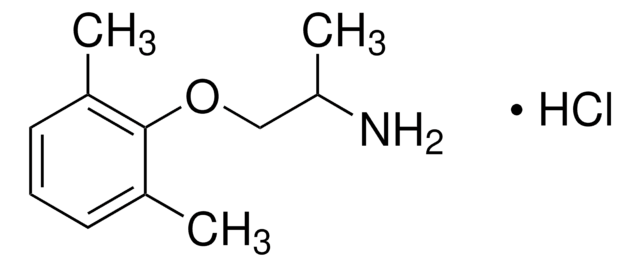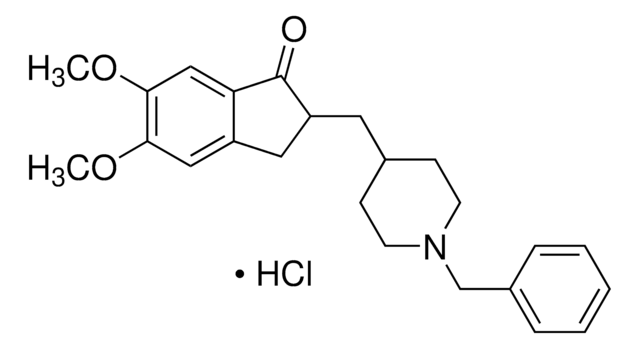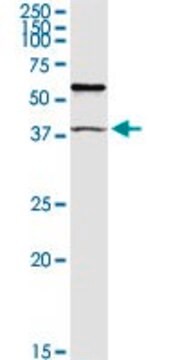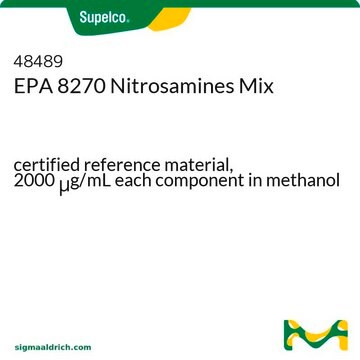SML0007
Cevimeline hydrochloride hemihydrate
≥95% (HPLC, NMR)
Synonym(e):
AF-102B, SNI-2011
About This Item
Empfohlene Produkte
Assay
≥95% (HPLC, NMR)
Form
powder
Lagerbedingungen
desiccated
Farbe
white to tan
Löslichkeit
H2O: ≥25 mg/mL
Ersteller
Daiichi-Sankyo
Versandbedingung
wet ice
Lagertemp.
−20°C
SMILES String
O.Cl.Cl.C[C@@H]1O[C@@]2(CS1)CN3CC[C@H]2CC3.C[C@@H]4O[C@@]5(CS4)CN6CC[C@H]5CC6
InChI
1S/2C10H17NOS.2ClH.H2O/c2*1-8-12-10(7-13-8)6-11-4-2-9(10)3-5-11;;;/h2*8-9H,2-7H2,1H3;2*1H;1H2/t2*8-,10-;;;/m11.../s1
InChIKey
ZSTLCHCDLIUXJE-GMLJRNIPSA-N
Anwendung
Biochem./physiol. Wirkung
Leistungsmerkmale und Vorteile
Signalwort
Danger
H-Sätze
Gefahreneinstufungen
Acute Tox. 3 Oral
Lagerklassenschlüssel
6.1C - Combustible acute toxic Cat.3 / toxic compounds or compounds which causing chronic effects
WGK
WGK 3
Flammpunkt (°F)
Not applicable
Flammpunkt (°C)
Not applicable
Analysenzertifikate (COA)
Suchen Sie nach Analysenzertifikate (COA), indem Sie die Lot-/Chargennummer des Produkts eingeben. Lot- und Chargennummern sind auf dem Produktetikett hinter den Wörtern ‘Lot’ oder ‘Batch’ (Lot oder Charge) zu finden.
Besitzen Sie dieses Produkt bereits?
In der Dokumentenbibliothek finden Sie die Dokumentation zu den Produkten, die Sie kürzlich erworben haben.
Artikel
Muscarinic acetylcholine receptors are G protein-coupled receptors (GPCRs) and mediate acetylcholine actions in the CNS and non-nervous tissues. Learn more about acetylcholine receptors and their role in cell signaling.
Unser Team von Wissenschaftlern verfügt über Erfahrung in allen Forschungsbereichen einschließlich Life Science, Materialwissenschaften, chemischer Synthese, Chromatographie, Analytik und vielen mehr..
Setzen Sie sich mit dem technischen Dienst in Verbindung.








